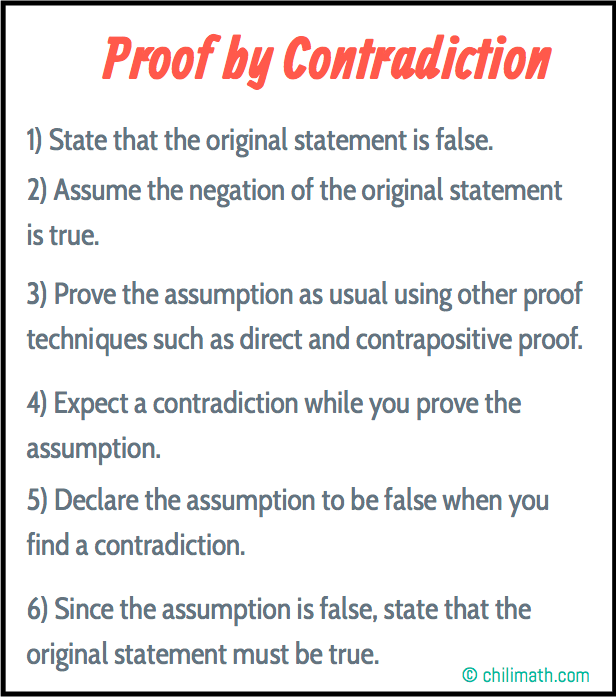Proof by Contradiction
Proof by contradiction (also known as indirect proof or the technique or method of reductio ad absurdum) is just one of the few proof techniques that are used to prove mathematical propositions or theorems.
The approach of proof by contradiction is simple yet its consequence and result are remarkable. In fact, this proof technique is very popular because it is relatively simple to implement, but more importantly, it is elegant.
Just a word of advice, use the proof by contradiction if the methods of direct and contrapositive proofs do seem to fail.
The reason is that direct proof or contrapositive proof may be the best to use because it has the shortest route or path to prove a theorem.
Below is the basic process describing the approach of the proof by contradiction:
1) State that the original statement is false. The original statement is the one you want to prove. That is to say, it is your desired result.
2) Assume that the opposite or negation of the original statement is true.
3) Try to prove the assumption, as usual, using other proof techniques such as direct or contrapositive proof.
4) While proving the assumption, give it the benefit of the doubt that it is true unless you stumble upon a contradiction.
5) Once you find a contradiction, declare that the assumption is false.
6) Since the assumption is false, state that the original statement must be true.
Quick Summary on the Proof by Contradiction

The following propositions/theorems are proved using the proof by contradiction:
There are infinitely many prime numbers
